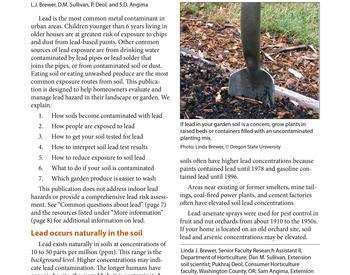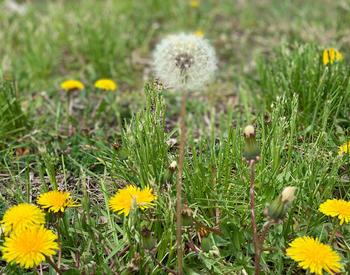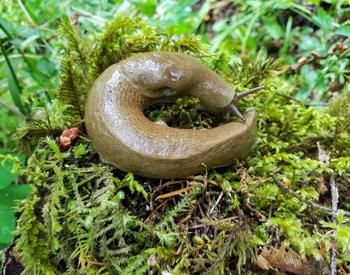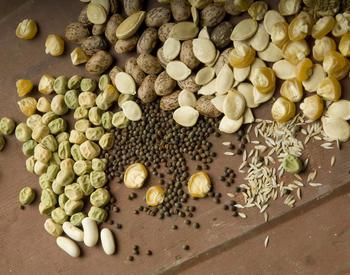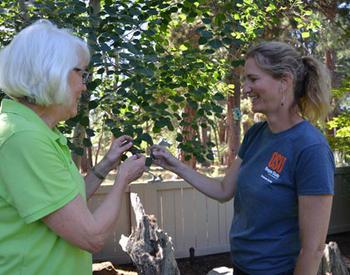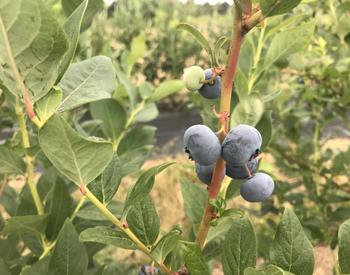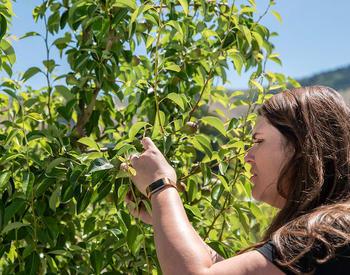Hormones are produced naturally by plants, while plant growth regulators are applied to plants by humans. Plant hormones and growth regulators are chemicals that affect:
- Flowering.
- Aging.
- Root growth.
- Distortion and killing of organs.
- Prevention or promotion of stem elongation.
- Color enhancement of fruit.
- Prevention of leafing, leaf fall or both.
- Many other conditions.
Very small concentrations of these substances produce major growth changes.
| Compound | Effect/Use |
|---|---|
| Gibberellic acid (GA) | Stimulates cell division and elongation, breaks dormancy, speeds germination |
| Ethylene gas (CH2) | Ripening agent; stimulates leaf and fruit abscission |
| Indoleacetic acid (IAA) | Stimulates apical dominance, rooting, and leaf abscission |
| Indolebutyric acid (IBA) | Stimulates root growth |
| Naphthalene acetic acid (NAA) | Stimulates root growth, slows respiration (used as a dip on holly) |
| Growth retardants (Alar, B-9, Cycocel, Arest) | Prevent stem elongation in selected crops (e.g., chrysanthemums, poinsettias, and lilies) |
| Herbicides (2,4-D, etc.) | Distorts plant growth; selective and nonselective materials used for killing unwanted plants |
Plant growth regulators may be synthetic compounds, such as IBA and Cycocel, that mimic naturally occurring plant hormones, or they may be natural hormones that were extracted from plant tissue, such as IAA.
Applied concentrations of these substances usually are measured in parts per million (ppm) and in some cases parts per billion (ppb). These growth-regulating substances most often are applied as a spray to foliage or as a liquid drench to the soil around a plant's base. Generally, their effects are short-lived, and they may need to be reapplied in order to achieve the desired effect.
5 groups of plant-growth-regulating compounds
There are five groups of plant-growth-regulating compounds: auxin, gibberellin (GA), cytokinin, ethylene, and abscisic acid (ABA). For the most part, each group contains both naturally occurring hormones and synthetic substances.
Auxin
Auxin causes several responses in plants:
- Bending toward a light source (phototropism).
- Downward root growth in response to gravity (geotropism).
- Promotion of apical dominance (the tendency of an apical bud to produce hormones that suppress the growth of the buds below it on the stem).
- Flower formation.
- Fruit set and growth.
- Formation of adventitious roots.
Auxin is the active ingredient in most rooting compounds in which cuttings are dipped during vegetative propagation.
Gibberellins
Gibberellins stimulate cell division and elongation, break seed dormancy, and speed germination. The seeds of some species are difficult to germinate; you can soak them in a GA solution to get them started.
Cytokinins
Unlike other hormones, cytokinins are found in both plants and animals. They stimulate cell division and often are included in the sterile media used for growing plants from tissue culture. If a medium's mix of growth-regulating compounds is high in cytokinins and low in auxin, the tissue culture explant (small plant part) will produce numerous shoots. On the other hand, if the mix has a high ratio of auxin to cytokinin, the explant will produce more roots. Cytokinins also are used to delay aging and death (senescence).
Ethylene
Ethylene is unique in that it is found only in the gaseous form. It induces ripening, causes leaves to droop (epinasty) and drop (abscission), and promotes senescence. Plants often increase ethylene production in response to stress, and ethylene often is found in high concentrations within cells at the end of a plant's life. The increased ethylene in leaf tissue in the fall is part of the reason leaves fall off trees. Ethylene also is used to ripen fruit (e.g., green bananas).
Abscisic acid
Abscisic acid (ABA) is a general plant-growth inhibitor. It induces dormancy and prevents seeds from germinating; causes abscission of leaves, fruits, and flowers; and causes stomata to close. High concentrations of ABA in guard cells during periods of drought stress probably play a role in stomatal closure.


